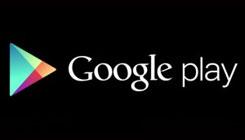
Last week's Google I/O 2012 offered entertainment and technology in a big way -- even beyond the live skydive broadcast over Google Hangouts On Air and the preview version of Android 4.1, which packs powerful API level functions and other features. Here's a comprehensive recap of the event:
Android 4.1 Jelly Bean
- Smart Home Screen Widgets: They auto-resize on-screen relative to surrounding widgets. A new widget API gives you access to this powerful organization feature.
- Google Beam: Improved NFC-based sharing lets users exchange photos, videos and more over Bluetooth with simple "tap to pair" for NFC-enabled devices. Simple, quick device-to-device sharing.
- Rich Push Notifications: Updated notifications now include rich media (photos or videos). Notificaton content can be seen directly from the tray without opening the associated app.
- Accessibility: Support for external braille input and output devices via USB or Bluetooth. Updated gesture functions controllable via API controls for accessibility features.
- Network Bandwidth Management: This API helps manage the amount of bandwidth consumed by your app on a host device connecting over metered networks, including tethering to a mobile hotspot. Increase customer satisfaction by decreasing bandwidth consumption for paid apps.
- Device-specific Encryption Key: Digital rights management for paid apps. Beginning with Jelly Bean, paid apps in Google Play are encrypted with a device-specific key before they are delivered.
- Battery Management: Device activity monitoring helps saves host device battery usage. The Android tutorial session on battery management teaches developer exactly how to take advantage of this new feature: "By taking steps such as disabling background service updates when you lose connectivity, or reducing the rate of such updates when the battery level is low, you can ensure that the impact of your app on battery life is minimized, without compromising the user experience."
- Face Unlock with Liveness Check: You read that correctly. Face Unlock uses Liveness Check to verify you're a real person, not a photograph, before allowing access to your device. Google says this is currently a low-security, experimental option.
- Additional Language Support: Also, bi-directional text for international users, so you can attract a wider audience by serving up localized app content.
Android Developer Resources
- Updated Android Developers Site: Redesigned look and new content too.
- New and Updated Tutorials: Tutorials cover design, development and deployment.
Google Play
- Smart App Updates: Updates now require downloading changes only instead of the entire app again, using one-third of space.
- Web-based App Install: Install apps from the web-based interface of Google Play.
- Expanded Entertainment: Movies, TV shows and magazines have been added, supporting Google's move into the tablet market.
- Developer Response to Reviews: Developers can now reply to customer reviews, a much-requested feature. Responding and resolving customer complaints can be done from your Google Play dashboard.
Google Now
- Voice-based Search and Text Input: The new voice-based search agent is a Siri competitor offering access to all of Google search, but also offline text entry.
Google Chrome Browser
- Cross-Platform Sync: Now available on iOS devices and trending as one of the top downloaded apps in iTunes. The current version of Google Chrome syncs with your Google account to give users access to bookmarks, settings and tabs. You can open multiple tabs on your desktop computer, then load up the browser in your new Nexus tablet to continue your browsing session. You can also see what tabs you have open on other devices. Sync can also predict which address you want to visit based on your browsing habits. I suspect Google's been testing this for some time. I've noticed Chrome accurately predicting my browsing over the last several months.
Google Drive
- iOS Availability: Contents are read-only for now. I've spent a little time with the iOS version of Drive and it appears to run well. The updated Google Drive offers a great opportunity for third-party developers to create add-on modules and integrate them with Android.
Hardware
- New Platform Development Kit: The latest SDK and the new Platform Development Kit will be provided to Android partners, chipset vendors and other hardware developers two to three months before major releases.
- Nexus 7 Tablet: The seven-inch tablet appears to be a competitor of Amazon's Kindle Fire, based on its price and form factor. Each of the 6,000 I/O attendees received this shiny new device.
- Galaxy Nexus Phone: The newest, purist version of the Android OS available on any phone (no developer candy). The phone sports all the Jelly Bean goodness plus more. Google Talk has even been updated to support video chat with other Google Talk users, no matter how they are connected. Text/SMS messaging has been updated with an "away" quick response option. You can ignore calls and offer a quick, canned explanation if you want.
- Nexus Q: "Q" as in media queue. This cloud-based, social, media-streaming unit allows you to connect to your content wirelessly from any Android device.
As a consumer, I'm looking forward to more bandwidth, better battery management and, especially, the new smooth-like-butter response of the latest version of my favorite mobile OS. Google Play has already been outfitted with Web-based app installs, another feature I really enjoy. And I don't think I'm alone. I have a hunch developers will delight in these new features.
Related Links
 Last week's Google I/O 2012 offered entertainment and technology in a big way -- even beyond the live skydive broadcast over Google Hangouts On Air and the preview version of Android 4.1, which packs powerful API level functions and other features. Here's a comprehensive recap of the event:
Last week's Google I/O 2012 offered entertainment and technology in a big way -- even beyond the live skydive broadcast over Google Hangouts On Air and the preview version of Android 4.1, which packs powerful API level functions and other features. Here's a comprehensive recap of the event:


